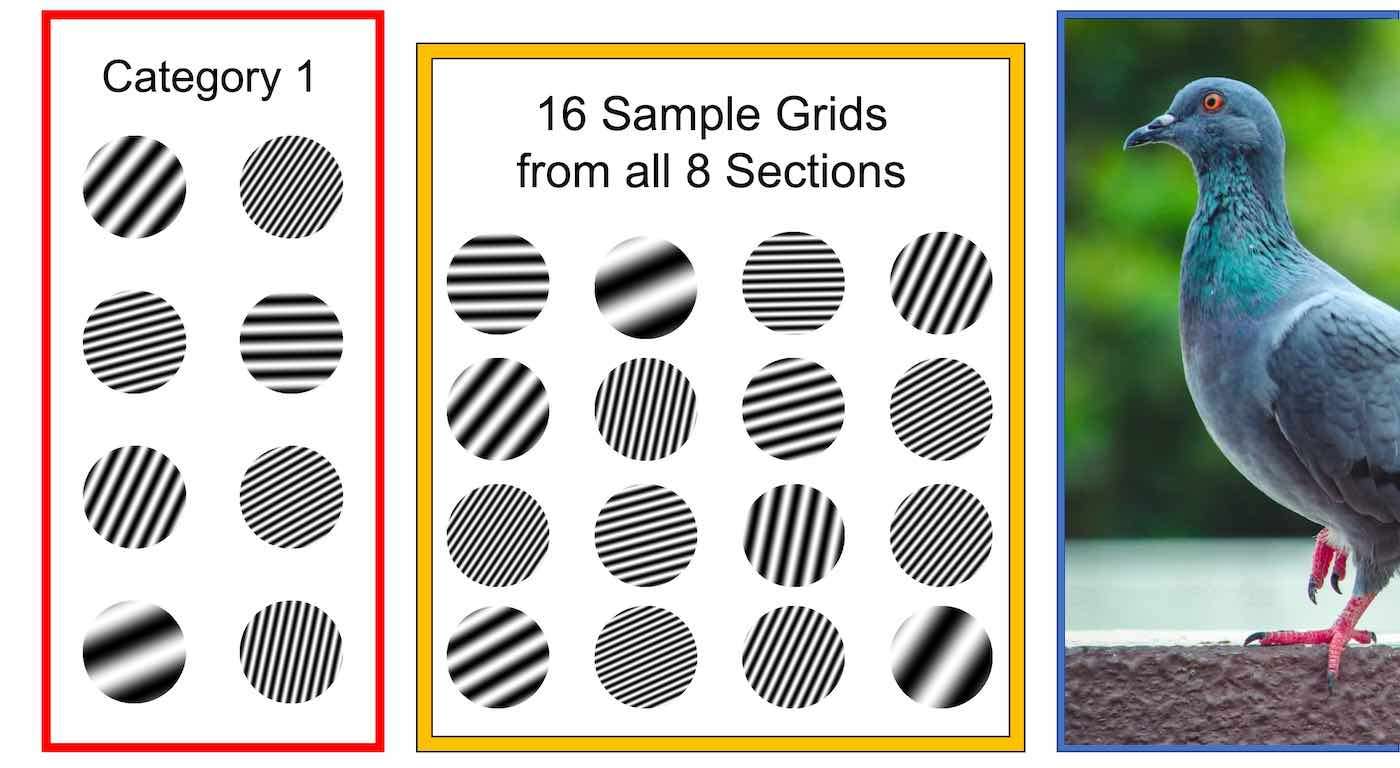Rare Species of Feline Dubbed the 'Original Grumpy Cat' Found Living On Mount Everest
A DNA analysis confirmed that the rare and little-known Pallas' cat lives on the body of Mount Everest—three miles above sea level.

Can a pigeon match wits with artificial intelligence? At a very basic level, yes.
In a new study, psychologists at the University of Iowa examined the workings of the pigeon brain and how the "brute force" of the bird's learning shares similarities with artificial intelligence.
The researchers gave the pigeons complex categorization tests that high-level thinking, such as using logic or reasoning, would not aid in solving. Instead, the pigeons, by virtue of exhaustive trial and error, eventually were able to memorize enough scenarios in the test to reach nearly 70% accuracy.
The researchers equate the pigeons' repetitive, trial-and-error approach to artificial intelligence. Computers employ the same basic methodology, the researchers contend, being "taught" how to identify patterns and objects easily recognized by humans. Granted, computers, because of their enormous memory and storage power—and growing ever more powerful in those domains—far surpass anything the pigeon brain can conjure.
Still, the basic process of making associations—considered a lower-level thinking technique—is the same between the test-taking pigeons and the latest AI advances.
"You hear all the time about the wonders of AI, all the amazing things that it can do," says Ed Wasserman, Professor of Experimental Psychology in the Department of Psychological and Brain Sciences at Iowa, and the study's corresponding author. "It can beat the pants off people playing chess, or at any video game, for that matter. It can beat us at all kinds of things. How does it do it? Is it smart? No, it's using the same system or an equivalent system to what the pigeon is using here."
The findings back previous research suggesting pigeons can discriminate Picasso paintings from Monets. They have also been found to count as well as primates, detect cancer in radiology images, recognize words, and have remarkable powers of recall.
The researchers sought to tease out two types of learning: one, declarative learning, is predicated on exercising reason based on a set of rules or strategies—a so-called higher level of learning attributed mostly to people. The other, associative learning, centers on recognizing and making connections between objects or patterns, such as, say, "sky-blue" and "water-wet."
Numerous animal species use associative learning, but only a select few—dolphins and chimpanzees among them—are thought to be capable of declarative learning.
Yet AI is all the rage, with computers, robots, surveillance systems, and so many other technologies seemingly "thinking" like humans. But is that really the case, or is AI simply a product of cunning human inputs? Or, as the study's authors put it, have we shortchanged the power of associative learning in human and animal cognition?
Wasserman's team devised a "diabolically difficult" test, as he calls it, to find out.
Each test pigeon was shown a stimulus and had to decide, by pecking a button on the right or on the left, to which category that stimulus belonged. The categories included line width, line angle, concentric rings, and sectioned rings. A correct answer yielded a tasty pellet; an incorrect response yielded nothing. What made the test so demanding, Wasserman says, is its arbitrariness: No rules or logic would help decipher the task.
"These stimuli are special. They don't look like one another, and they're never repeated," says Wasserman, who has studied pigeon intelligence for five decades. "You have to memorize the individual stimuli or regions from where the stimuli occur in order to do the task."
Each of the four test pigeons began by correctly answering about half the time. But over hundreds of tests, the quartet eventually upped their score to an average of 68% right.
"The pigeons are like AI masters," Wasserman says. "They're using a biological algorithm, the one that nature has given them, whereas the computer is using an artificial algorithm that humans gave them."
The common denominator is that AI and pigeons both employ associative learning, and yet that base-level thinking is what allowed the pigeons to ultimately score successfully. If people were to take the same test, Wasserman says, they'd score poorly and would probably give up.
"The goal was to see to what extent a simple associative mechanism was capable of solving a task that would trouble us because people rely so heavily on rules or strategies," Wasserman adds. "In this case, those rules would get in the way of learning. The pigeon never goes through that process. It doesn't have that high-level thinking process. But it doesn't get in the way of their learning. In fact, in some ways it facilitates it."
Wasserman sees a paradox in how associative learning is viewed.
"People are wowed by AI doing amazing things using a learning algorithm much like the pigeon," he says, "yet when people talk about associative learning in humans and animals, it is discounted as rigid and unsophisticated."
The study, "Resolving the associative learning paradox by category learning in pigeons," was published Feb. 7 in the journal Current Biology.
Study co-authors include Drew Kain, who graduated with a neuroscience degree from Iowa in 2022 and is pursuing a doctorate in neuroscience at Iowa; and Ellen O'Donoghue, who earned a doctorate in psychology at Iowa last year and is now a postdoctoral scholar at Cardiff University.
Be the first to comment